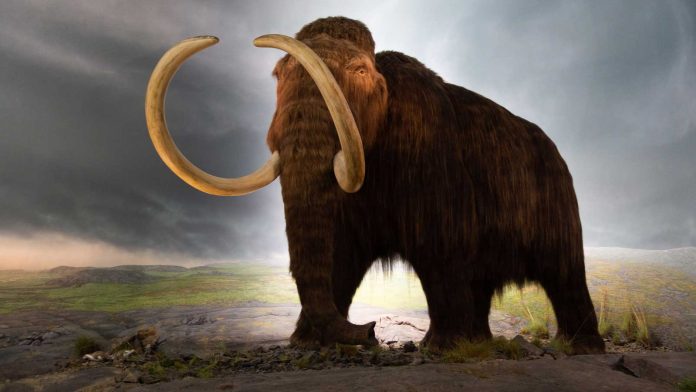The media is abuzz with news of a recent breakthrough in de-extinction research. The creation of genetically modified mice sporting a distinctive woolly coat marks an important step in resurrecting the extinct woolly mammoth, some researchers argue. The fluff factor is key because scientists hope to create a shaggy, cold-tolerant creature to fill the niche left vacant by the long-extinct pachyderm. A lab-created mammoth, which U.S.-based biotechnology and genetic engineering firm Colossal Biosciences promises to unveil as soon as 2028, would be a hybrid creature – part Asian elephant, part mammoth. A mammophant.
The mammoth is not the only candidate for de-extinction. Scientists have set their sights on resurrecting a whole menagerie of lost creatures, including the passenger pigeon, the dodo, and an iconic Australian marsupial called the thylacine, among others. But the mammoth is by far the most ambitious.
Why bring back a species that hasn’t roamed the Earth for many thousands of years? Answers run the gamut from ethical arguments about righting egregious wrongs to the potential benefits for ecosystems and conservation science. There’s also the sheer coolness of seeing a massive Pleistocene monster lumbering back from the dead.
On the ethics front, Ben Lamm, a serial entrepreneur and CEO of Colossal Biosciences, says that humanity has a moral and ethical obligation to undo the harms of human-caused extinction. In the case of mammoths, moral arguments conveniently merge with ecological rationales. The alleged urgency of mammoth resurrection hinges largely on claims that reintroducing these animals to the Arctic tundra would avert the release of a planet-warming methane bomb.
Methane is a highly potent climate-warming gas with heat-trapping abilities far greater than carbon dioxide. Harvard geneticist George Church, who cofounded Colossal, cites the alarming rate of permafrost melt as motivating the mammoth project. The company argues that herds of zombie mammoths could act as ecosystem engineers. For example, they could pack down and clear away snow, which would help the permafrost stay frozen by removing its insulating snow blanket and exposing it to frigid air. In doing so, the mammoths could halt the rapid release of dangerous methane.
So reviving the mammoth sounds like a win-win – a climate fix that doubles as a remedy to the injustice of human-caused extinction. But the facts tell a more complicated and troubling story.
Ben Lamm’s insistence on the moral duty to revive the mammoth obscures the complicated and contested causality of mammoth extinction. Research suggests that the naturally oscillating climate of the late Pleistocene triggered vegetation scarcity that precipitated the mammoths’ decline. Hunting pressure from humans was not the death knell but at best a “synergistic cofactor” in their demise.
Urgent calls for a mammoth solution to a near-term methane bomb are also misleading. Although it’s true that the warming Arctic is releasing methane, scenarios involving the sudden escape of vast quantities of the potent gas look unlikely. Serious commitment to reducing climate pollution from human sources – while less exciting than de-extinction – remains our best bet.
These doubts about the impending detonation of a purported methane bomb make it even harder to justify the ethical harms de-extinction technologies inflict on the creatures involved. At present, the clearest pathway to mammoth de-extinction requires the use of endangered Asian elephants to serve as a genetic template and gestational surrogate. DNA recovered from extinct species is typically fragmentary and degraded, so gene-editing tools are used to merge the sullied bits of mammoth DNA with the genome of the living relative. The edited cells are then implanted into an elephant egg and, if all goes well, the embryo develops in the womb of an elephant surrogate.
What goes well for the scientist may not go well for the animals.
Elephants are highly intelligent, intensely social animals. They live in tightly knit, female-led herds that often contain multiple generations. Like us, they mourn and bury their dead. Welfare considerations should be paramount in any experiment involving them. Yet as a private firm, Colossal is largely unregulated.
Surrogacy entails risk and potential suffering, even among members of the same species. In surrogacy between species, developmental and birthing complications arise that may harm both organisms. A mother’s hormones trigger developmental changes in fetal life, governing the timing and expression of genes. It’s unlikely that surrogates can replicate the extinct mammoth’s uterine environment. Serious health and nutrition issues can also result from their incompatibility. Captive breeding and forced reintroduction to a strange environment – should the experiments reach that point – would likely induce further trauma for such complex animals.
George Church has estimated that around 80,000 such mammophants would be needed to transform the Arctic landscape. Picture the task of orchestrating, simulating, and synchronizing the various nuanced interactions that allow complex megafauna to successfully mate, gestate, develop, give birth, form functional social groups, learn from one another, and navigate new environments. Then scale that up to 80,000.
To be sure, conservation often involves trade-offs between the welfare of individual creatures and the benefits to species and ecosystems. Captive breeding programs and species reintroductions carry risks to animals and try the public’s patience. But there are limits to how far we should go. In the case of de-extinction, the ends do not justify the means.
Proponents of de-extinction argue that good news stories like the recent frenzy over woolly mice create much-needed hope and excitement in times of dire environmental news. But hope carries the risk of greater reliance on technofixes at the expense of meaningful action. Ethicists refer to this danger as the moral hazard: Simply put, if we think we can bring species back to life, why worry about letting them go extinct? And if we believe that de-extincted creatures will shield us from catastrophic climate scenarios, why stop emitting?
Rather than a solution, de-extinction is a multiplier of threats. The moral response to extinction lies not in changing genomes but changing ourselves.
Lisa H. Sideris is a Public Voices fellow of The OpEd Project and the University of California Santa Barbara, where she is a professor and vice-chair of the Environmental Studies Program.




